Complete Solutions to Conceptual MCQs single option correct of chapter ELECTROSTATICS of Class 12 book with complete answers and questions
| Class 12 | PHYSICS |
| Chapter | ELECTROSTATICS |
| PHYSICS GALAXY | Conceptual MCQs single option correct |
| Number Of Questions | 70 |
| Academic Year | 2023-24 |
A soap bubble is given a negative charge, then its radius
02:19View SolutionA given charge is situated at a certain distance from an electric dipole in the end-on position experiences a force `F` If the distance of the charge is doubled, the force acting on the charge will be
01:51View SolutionThe electric field on two sides of a thin sheet of charge is shown in the figure. The charge density on the sheet is
 04:49View Solution
04:49View SolutionThree identical charges are placed at corners of a equilateral triangel of side l. If force between any two charges is F, the work required to double the dimensiions of triangle is
02:30View SolutionThree concentric conducting sphereical shells carry charges `+4Q` on the inner shell `-2Q` on the middle shel and `+6Q` on the outer shell. The charge on the inner surface of the outer shell is
01:20View SolutionA and B are two concentric spherical shells. If A is given a charge `+q` while B is earthed as shown in figure then
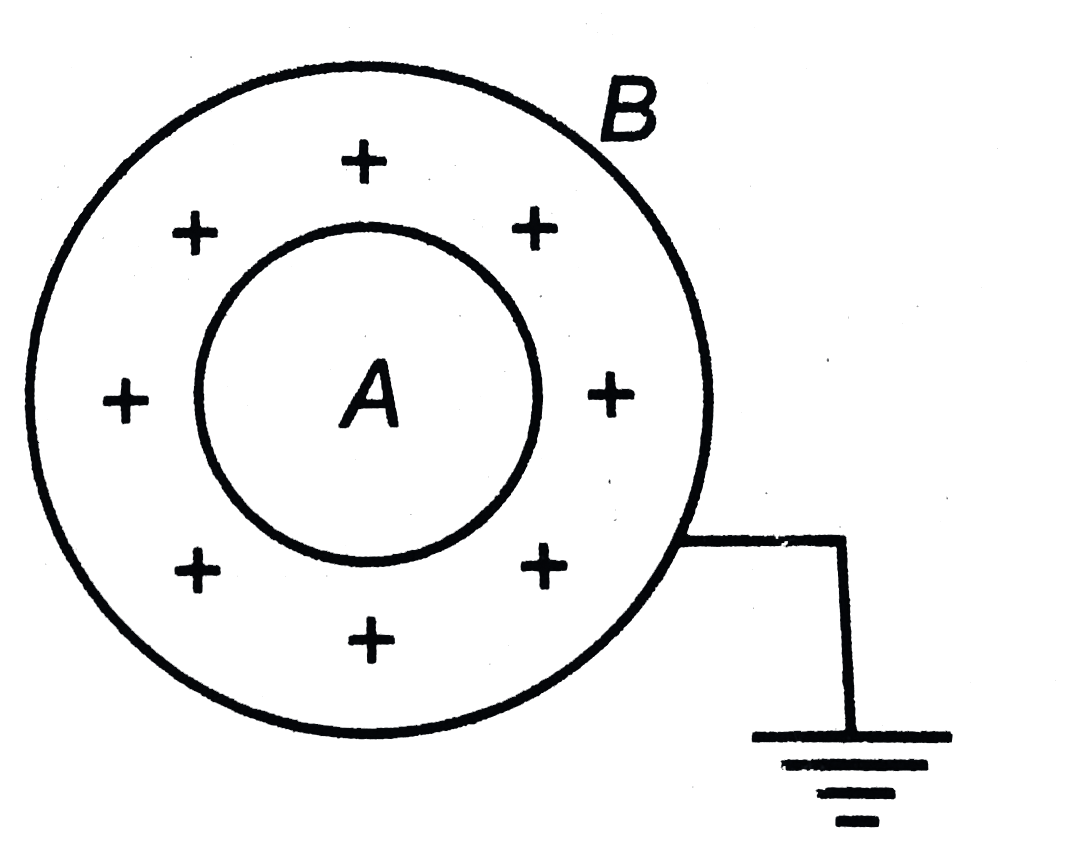 05:37View Solution
05:37View SolutionTwo concentric conducting thin spherical shells A andB having radii rA and `r8 (r_(8) gt r_(A))` are charged to `Q_(A)` and `- Q_(B)(|Q_(B)| gt |Q_(A)|)`. The electric field strength along a line passing through the centre varies with the distance x as :
05:33View SolutionElectric potential at a point P, r distance away due to a point charge q kept at point A is V. If twice of this charge is distributed uniformly on the surface of a hollow sphere of radius 4r with centre at point A the potential at P now is
01:17View SolutionThere is a point charge +q inside a hollow sphere and a point charge -q just outside its surface. The total flux passing through the surface of sphere is :
02:42View SolutionThe figure shows three non condncting rods, one circular and two straight. Each has a uniform charge of magnitude Q distributed on its one half and -Q on its other half as shown in the figure-1.364. Which of these correctly represents the direction of field at point P :
 03:46View Solution
03:46View SolutionA conducting spherical shell having inner radius a and outer radius b carries a net charge Q. If a point charge q is placed at the centre of this shell, then the surface charge density on the outer surface of the shell is given as:
03:18View SolutionIf a unit positive charge is taken from one point to another over an equipotential surface ,then
01:29View SolutionTen electrons are qually spaced and fixed around a circle of radius `R`. Relative to `V = 0` at infinity, the electrostatic potential `V` and the electric field `E` at the centre `C` are
01:53View SolutionLet `P(r)=(Q)/(piR^4)r` be the charge density distribution for a solid sphere of radius R and total charge Q. For a point 'p' inside the sphere at distance `r_1` from the centre of the sphere, the magnitude of electric field is:
03:43View SolutionA hollow conducting sphere is placed in an electric field produced by a point charge placed at `P` as shown in figure.
Let `V_(A), V_(B), V_(C )` be the potentials at points `A, B and C` respectively. Then
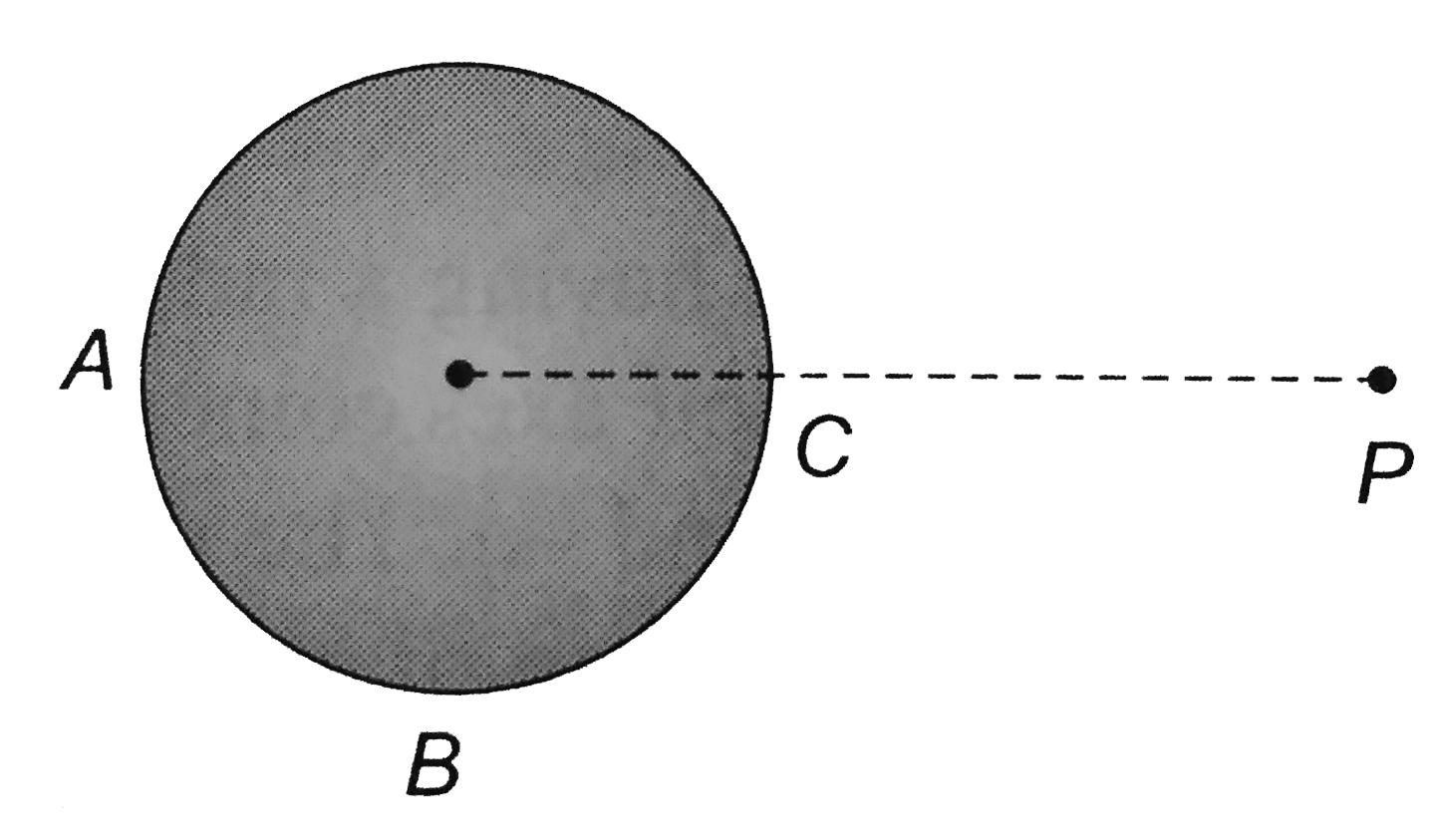 01:25View Solution
01:25View SolutionTwo very large thin conducting plates having same cross sectional area are placed as shown in figure. They are carrying chaerges `Q` and `3Q`, respectivley. The variation of electric field as as function at x(for `x=0` to `x=3d`) will be best represented as by
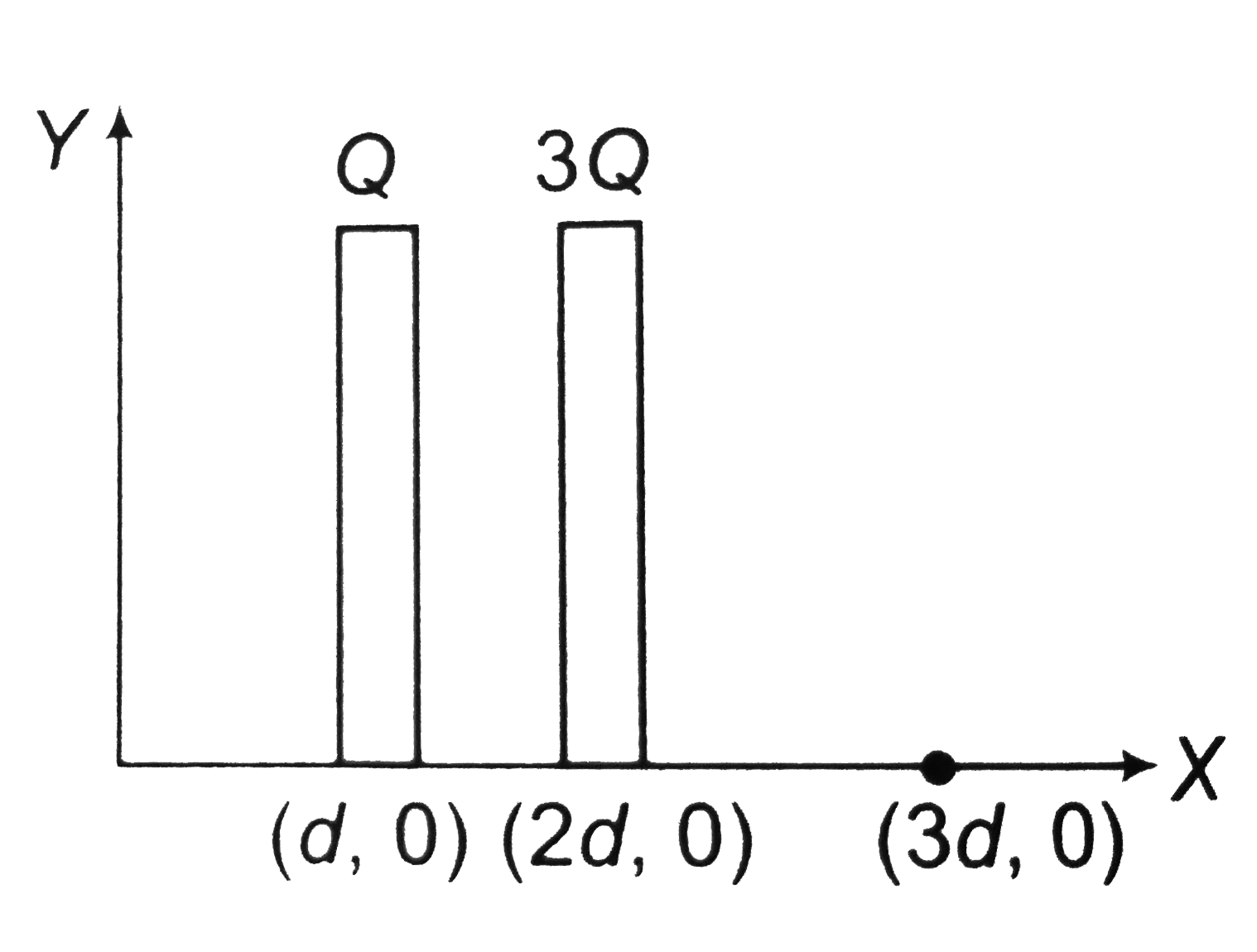 03:36View Solution
03:36View SolutionA conducting shell `S_1` having a charge Q is surrounded by an uncharged concentric conducting spherical shell `S_2`.
Let the potential difference between `S_1` and that `S_2` be V. If the shell `S_2` is now given a charge `-3Q`, the new potential difference between the same two shells is01:58View SolutionFor a given surface the Gauss's law is stated as`oint vecE.dvecA=0`. From this we can conclude that
03:01View SolutionThe potential field depends on the x - and y - coordinates as `V = x^2 - y^2`. The corresponding electric field lines in x y plane are as.
02:48View SolutionConisder a neutral conducting sphere. A poistive point charge is placed outisde the sphere. The net charge on the sphere is then
01:49View SolutionOne metallic sphere `A` is given positive charge whereas another identical metallic sphere `B` of exactly same mass as of `A` is given equal amount of negative charge. Then
03:18View SolutionTwo point charges a and b whose magnitude are same, positioned at a certain distance along the positive x-axis from each other a is at origin. Graph is drawn between electrical field strength and distance x from a. E is taken positive if it is along the line joining from a to b Fro the graph it ca be decided that
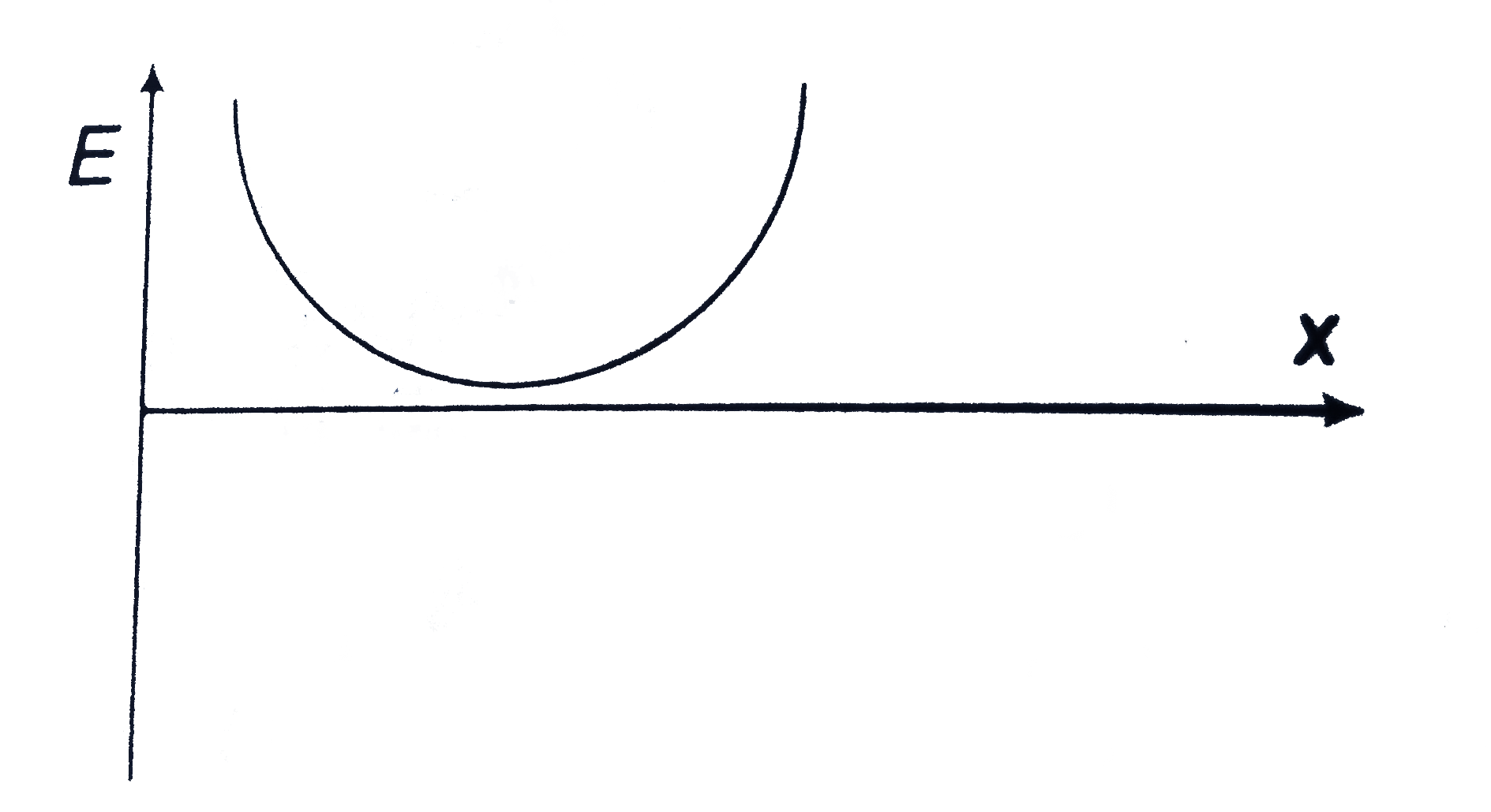 03:58View Solution
03:58View SolutionTwo spheres `A` and `B` of radius 'a' and 'b' respectively are at same electric potential. The ratio of the surface charge densities of `A` and `B` is
02:10View SolutionA long, hollow conducting cylinder is kept coaxially inisde another long, hollow conducting cylinder of larger radius. Both the cylinders are initially electrically neutral.
03:23View SolutionThe figure shows the path of a positively charged particle `1` through a rectangualr region of unifrom electric field as shown in the figure. What is the direction of electric field and the direction of deflection of particles `2, 3` and `4` ?
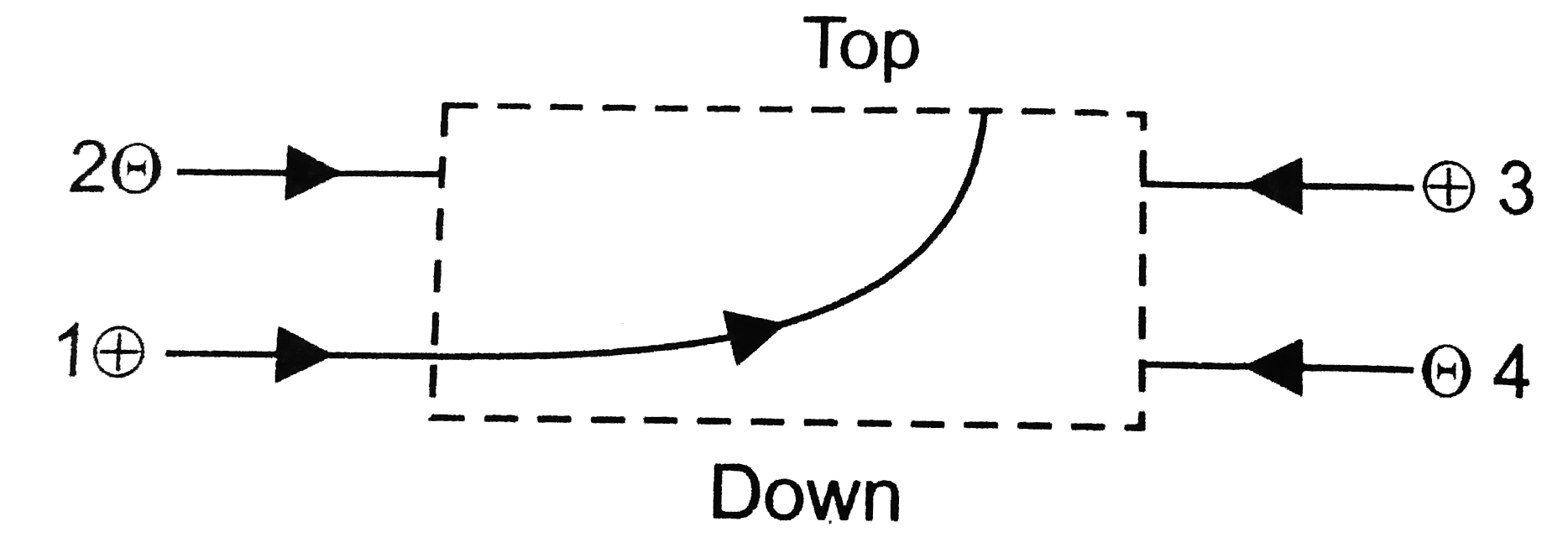 02:13View Solution
02:13View SolutionThe force experienced by a unit positive point charge when placed in an electric field is called ?
02:25View SolutionA square surface of side `L m` is in the plane of the paper. A uniform electric field `vec(E )(V//m)`, also in the plane of the paper, is limited only to the lower half of the square surface (see figure). The electric flux in `SI` units associated with the surface is:
 02:00View Solution
02:00View SolutionA positively charged disc is placed on a horizontal plane. A charged particle is released from a certain height on its axis. The particle just reaches the centre of the disc. Select the correct alternative.
05:09View SolutionThe electric field intensity at the center of a uniformly charged hemispherical shell is `E_(0)`. Now two portions of the hemisphere are cut from either side, and the remaining portion is shown in fig. If `alpha=beta=pi//3`, then the electric field intensity at the center due to the remaining portion is
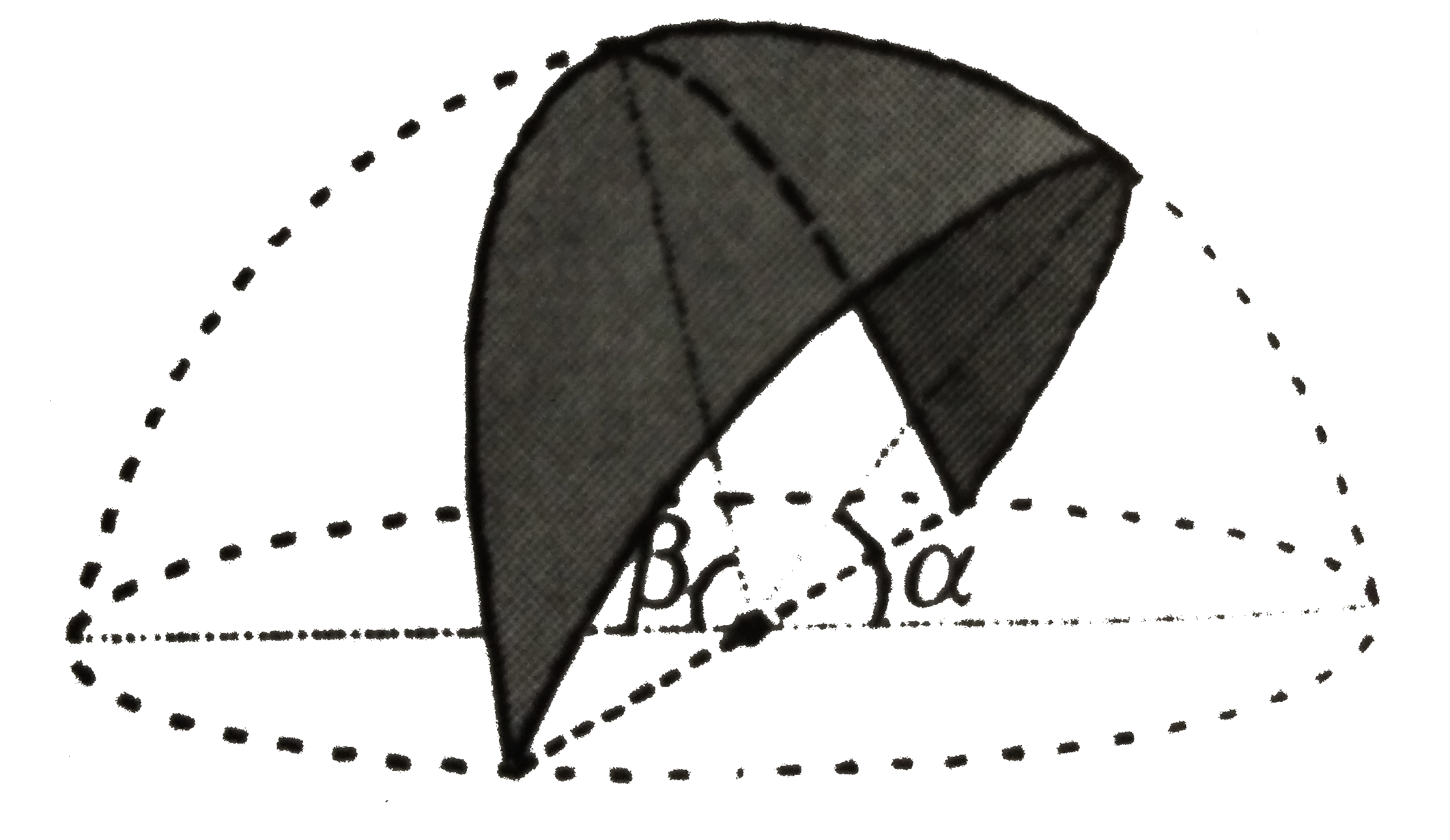 02:46View Solution
02:46View SolutionA wooden block performs SHM on a frictionless surface with frequency, `v_(0)`. The block carries a charge `+Q` on its surface. If now a uniform electric field `vec (E)` is switched on as shwon in figure., then the SHM of the block will be
 01:48View Solution
01:48View SolutionTwo equal positive charges are kept at points A and B. The electric potential at the points between A and B (exculding these points ) is studid while moving from A to b. The potential
05:11View SolutionConsider a system of three charges `(q)/(3),(q)/(3) and -(2q)/(3)` placed ar point A,B and C respectively, as shown in the figure. Take O to be the centre of the circle of radius R and angle `CAB = 60^(@)`. Choose the incorrect options
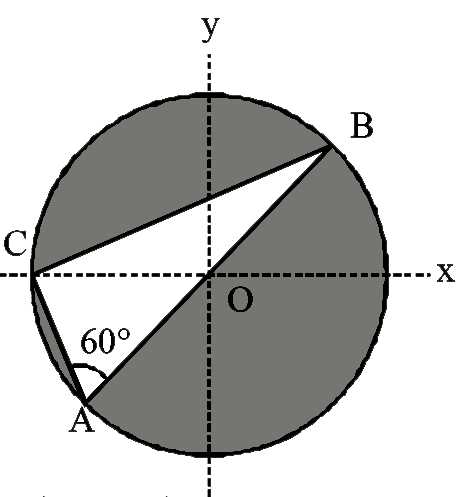
(1) The electric field at point O is `(q)/(8 pi epsilon_(0)R^(2))` directed along the negative x-axis
(2) The potential energy of the system is zero
(3) The potential at point O is `(q)/(12 pi epsilon_(0) R)`
(4) The magnitude of the force between the charges at C and B is `(q^(2))/(54 pi epsilon_(0) R^(2))`05:27View SolutionA solid conducting sphere having a charge Q is surrounded by an uncharged concentric conducting hollow spherical shell. Let the potential difference between the surface of the solid sphere and that of the outer surface of the hollow shell be V. If the shell is now given a charge of `-3Q`, the new potential difference between the same two surfaces is :
09:19View SolutionCharges Q and -2Q are placed at some distance. The locus of points in the plane of the charges where the potential is zero will be :
10:53View SolutionThree infinite long charged sheets of charge densities `-sigma,-2sigma and sigma` are placed parallel to,y-plane at z= 0, z= a, z= 3a. Electric field at point Pis given as :
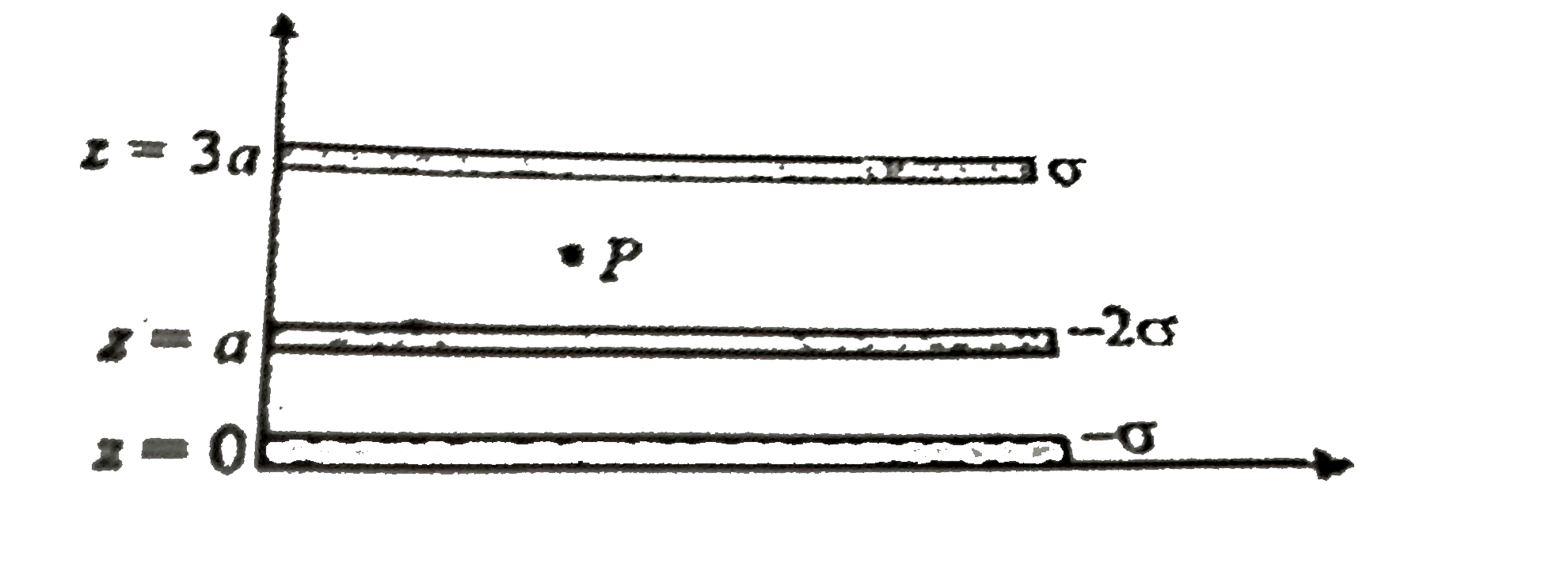 02:55View Solution
02:55View SolutionA spherical insulator of radius R is charged uniformly with a charge Q throughout its volume and contains a point charge `Q/16` located at its centre. Which of the following graphs best represent quanlitatively, the variation of electric field intensity E with distance r from the centre.
06:03View SolutionFigure shown an imaginary cube of edge L/2. A uniformly Charged rod of length L moves towards left at a small but constant speed v. At t=0, the left end just touches the centre of the cube opposite it. Which of the graphs shown in figure represents the flux of the electic field through the cube as the rod goes through it?
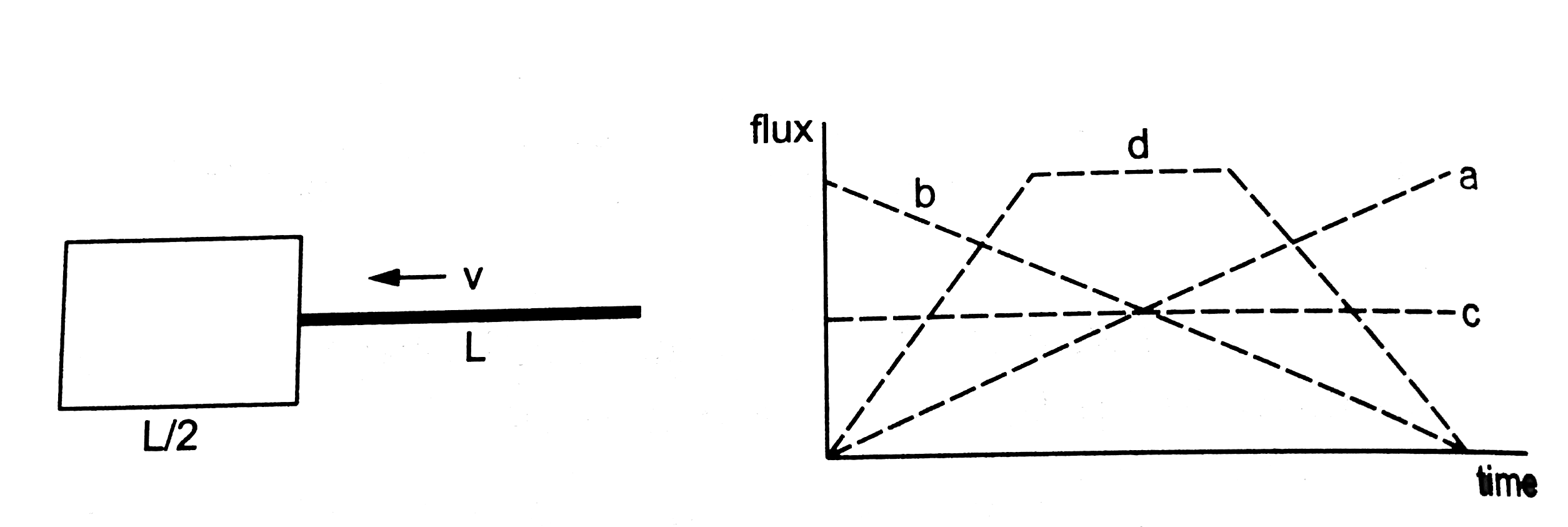 02:56View Solution
02:56View SolutionThe curve represents the distribution of potential along the staight line joining the two charges `Q_1 and Q_2` (separated by a distance r) then which of the following statements are correct?
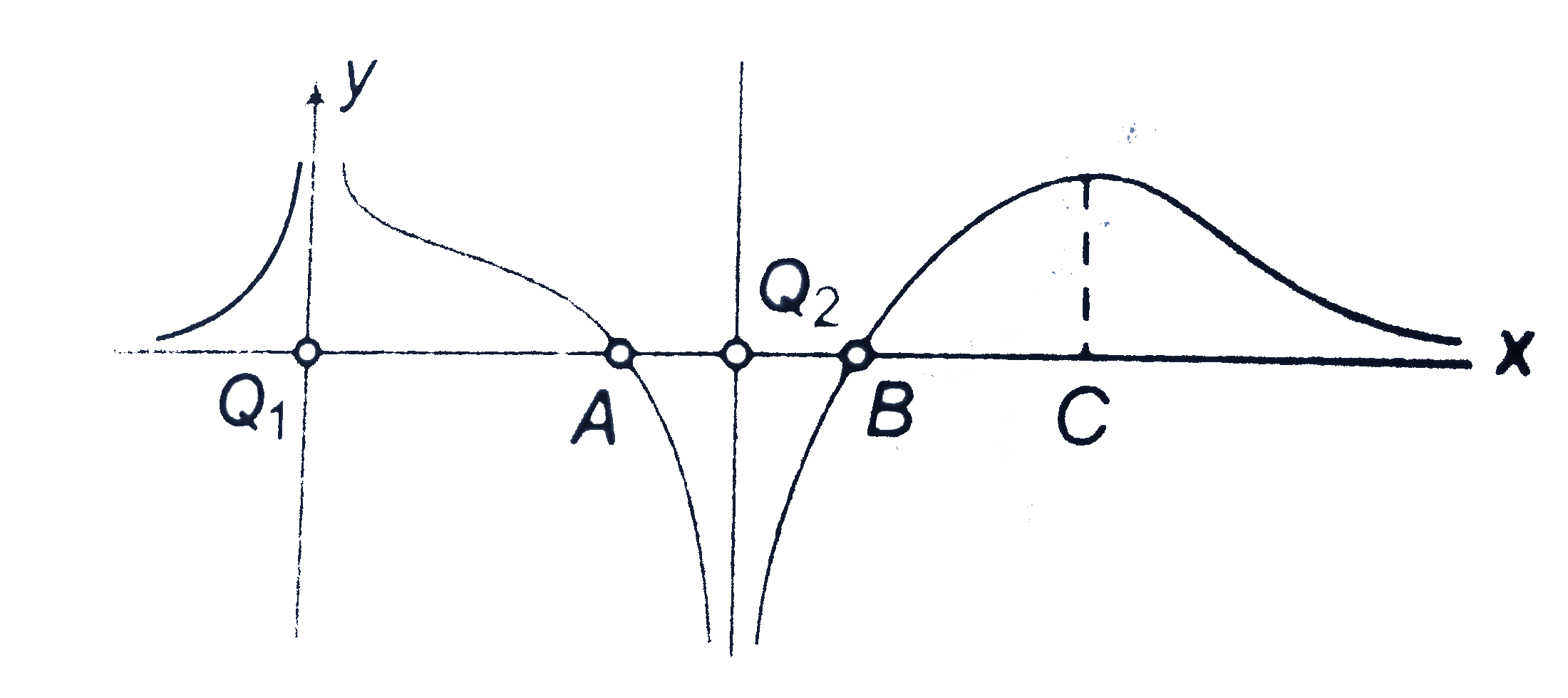
1. `|Q_1|gt|Q_2|`
2. `Q_1` is positive in nature
3. A and B are equilibrium points
4. C is a point of unstabkle equilibrium10:25View SolutionFour similar point charges q are located at the vertices of (C) a tetrahedron with an edge a. The energy of the interaction of Four similar point charges q are located at the vertices of (C) a tetrahedron with an edge a. The energy of the interaction of
 02:14View Solution
02:14View SolutionA positively charged ball hangs from a long silk thread. Electric filed at a certain point (at the same horizontal level of ball) due to this charge is E. Let us put a positive test charge `q_(0)` at this point and measure `F//q_(0)` on this charges. then E
02:09View SolutionA particle of charge `-q` and mass `m` moves in a circular orbits of radius `r` about a fixed charge `+Q`.The relation between the radius of the orbit `r` and the time period `T` is
03:57View SolutionTwo concentric spherical shells of radii r and `R(rltR)` have surface charge densities `-sigma` and `+sigma` respectively. The variation ofelectric potential V with distance x from the centre O of the shells plotted. Which of the following graphs best depict the variation qualitatively?
06:15View SolutionIn figure `+Q` charge is located at one of the edge of the cube as shown in figure-1.376. Then electric flux through cube due to `+Q ` charge is given as
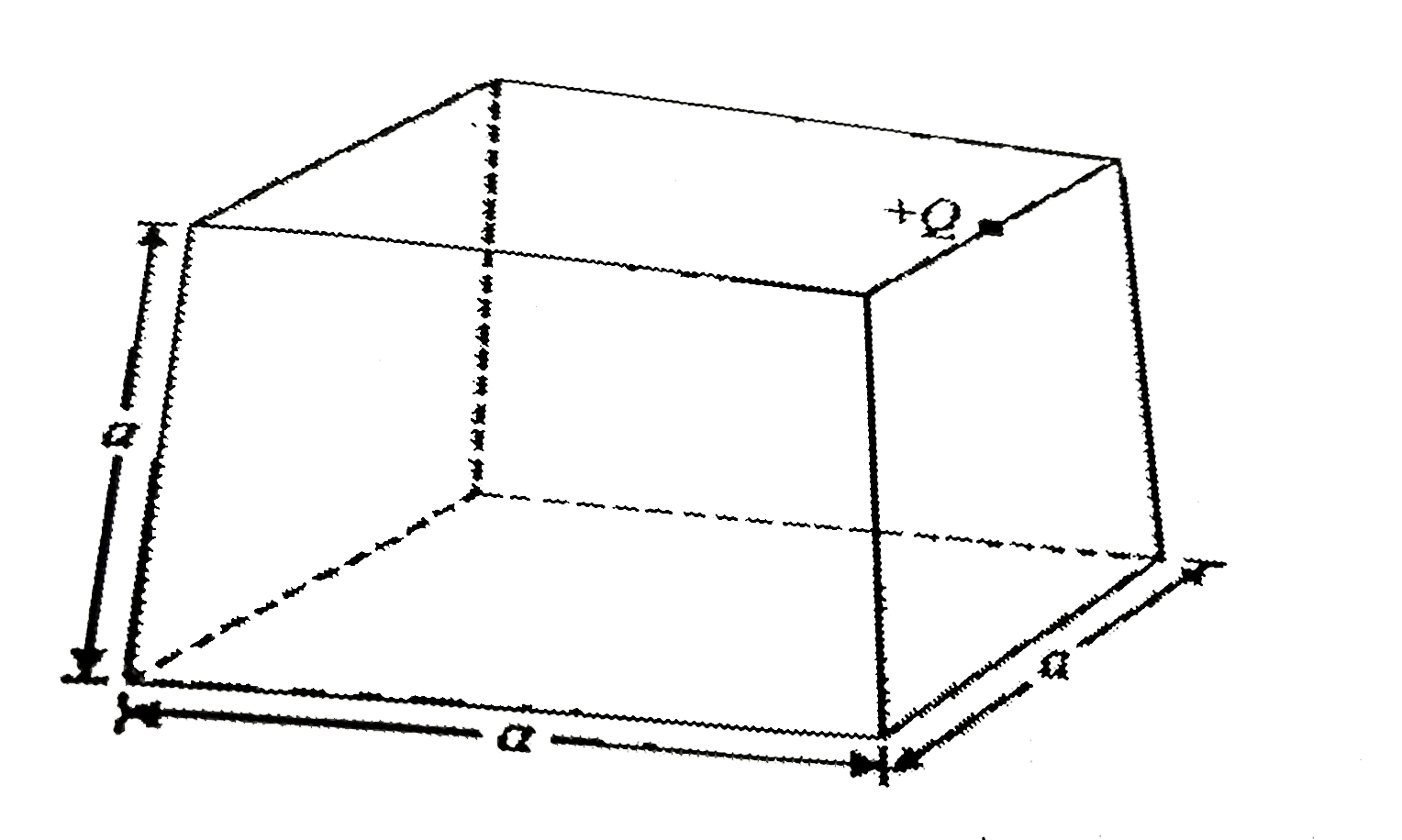 02:24View Solution
02:24View SolutionTwo equal negative charges `-q` are fixed at points `(0, -a)` and `(0,a)` on y-axis. A poistive charge Q is released from rest at point `(2a, 0)` on the x-axis. The charge Q will
06:29View SolutionThe adjacent diagram shows a charge `+Q` held on an insulating support `S` and enclosed by a hollow spherical conductor,`O` represent the center of the spherical conductors and `P` is a point such that `OP=x` and `SP=r` .The electric field at point `P` will be
 02:56View Solution
02:56View SolutionA charge q is placed at O in the cavity in a sphereical uncharged conductor. Points S is outside the conductor. If q is displaced from O towards S (still remaining within the cavity)
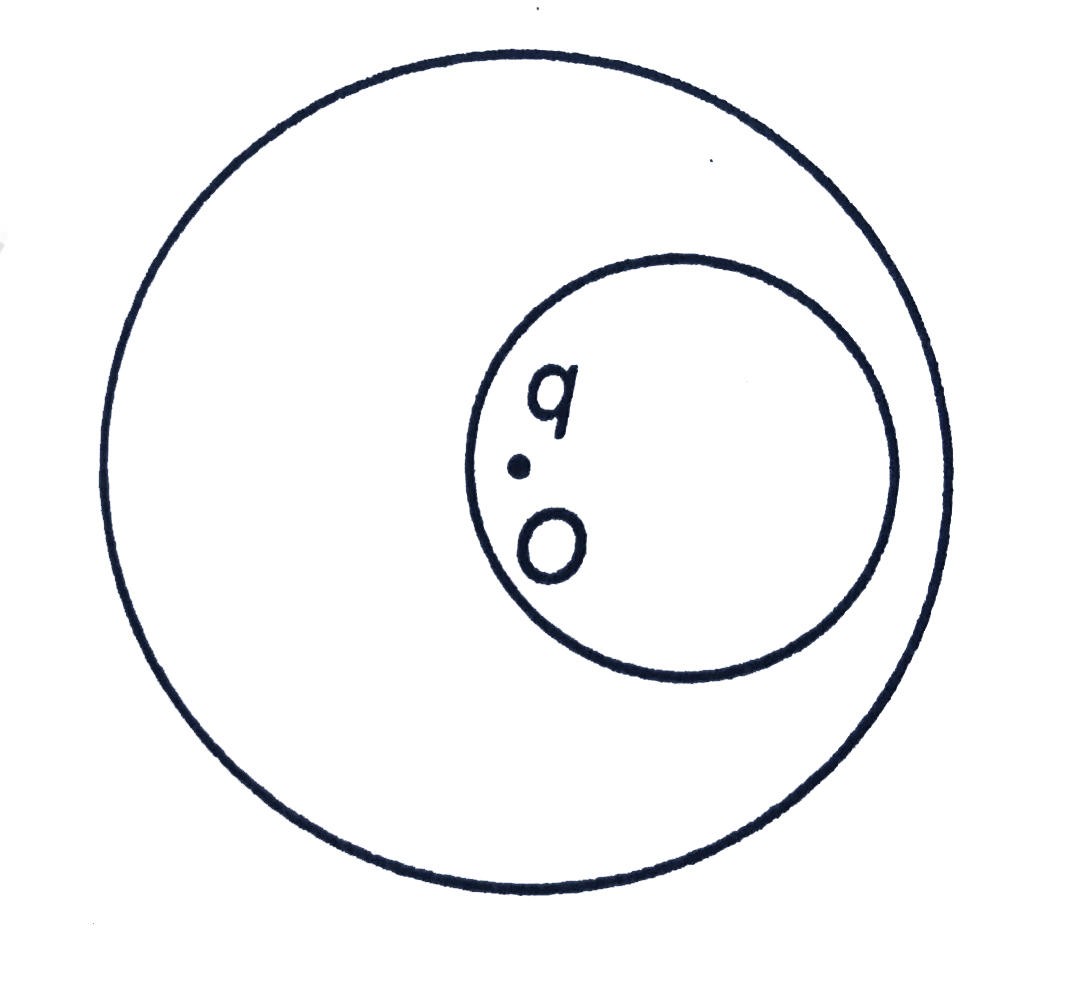 01:29View Solution
01:29View SolutionTwo pith balls having charge `3_(q)` and `2_(q)` are placed at distance of a from each other. For what value of charge transferred from `1 ^(st)` ball to `2^(nd)` ball, force between balls becomes maximum?
01:33View SolutionThe insulated spheres of radii `R_(1)` and `R_(2)` having charges `Q_(1)` and `Q_(2)` respectively are connected to each other. There is
06:31View SolutionA uniformly charged thin spherical shell of radius R carries uniform surface charge denisty of `isgma` per unit area. It is made of two hemispherical shells, held together by presisng them with force F(see figure). F is proportional to
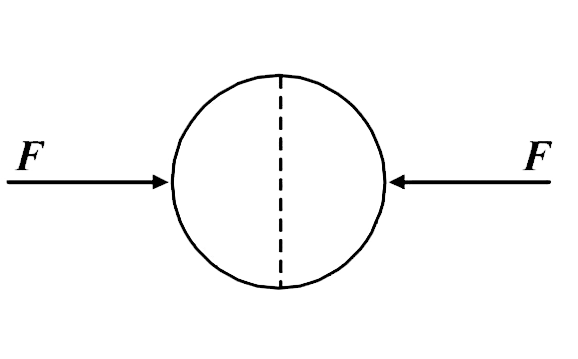 01:46View Solution
01:46View SolutionA sphere of radius R carries charge density p proportional to the square of the distance from the centre such that `p = Cr^(2)`, where C is a positive constant. At a distance R`//`2 from the centre, the magnitude of the electric field is :
04:49View SolutionTwo point charges, each with a charge of `+ 1 muC`, lie at some finite distance apart. On which of the segments of an infinite line going through the charges is there a point, a finite distance away from the charges, where the electric potential is zero, assuming that it vanishes at infinity?
01:53View SolutionIn normal cases thin stream of water bends toward a negatively charged rod. When a positively charged rod is placed near the stream, it will bend in the
 02:30View Solution
02:30View SolutionHow does the electric field strength vary when we enter and move inside a uniformly charged spherical cloud?
02:21View SolutionOn an imaginary planet the acceleration due to gravity is same as that on Earth but there is also a downward electric field that is uniform close to the planet's surface. A ball of mass m carrying a charge q is thrown upward at a speed v and hits the ground after an interval t, What is the magnitude of potential difference between the starting point and top point of the trajectory?
07:36View SolutionA uniform electric field of `400 V/m` is directed at `45^@` above the x-axis as shown in the figure. The potential difference `V_A-V_B` is given by
 05:20View Solution
05:20View SolutionA continuous line of charge oflength 3d lies along the x-axis, extending from `x + d` to` x + 4d` . the line carries a uniform linear charge density `lambda`.

In terms of d,`lambda` and any necessary physical constants, find the magnitude of the electric field at the origin:03:10View SolutionElectric charge are distributed in a small vouume. The flux of the electric field through a spherical surface of rasius 10cm surrounding the total charge is 25 V m. The flux over a concentric sphere of radius 20 cm will be
02:32View SolutionThree concentric metallic spherical shells `A,B` and `C` of radii `a,b` and `c(a lt blt c)` have surface charge densities `-sigma ,+sigma `and `-sigma` respectively ,the potential of shell `A` is
03:24View SolutionA particle of mass m and charge q is attached to a light rod oflength L. The rod cau rotate freely in the plane of paper about the other end, which is hinged at P, the.entire assembly lies in an uniform electric field E acting in the plane of paper ·as shown in the figure-. The rod is released from rest when it makes an angle 9 with the electric field direction. Determine the speed oft he particle when the rod becomes parallel to the electric field:
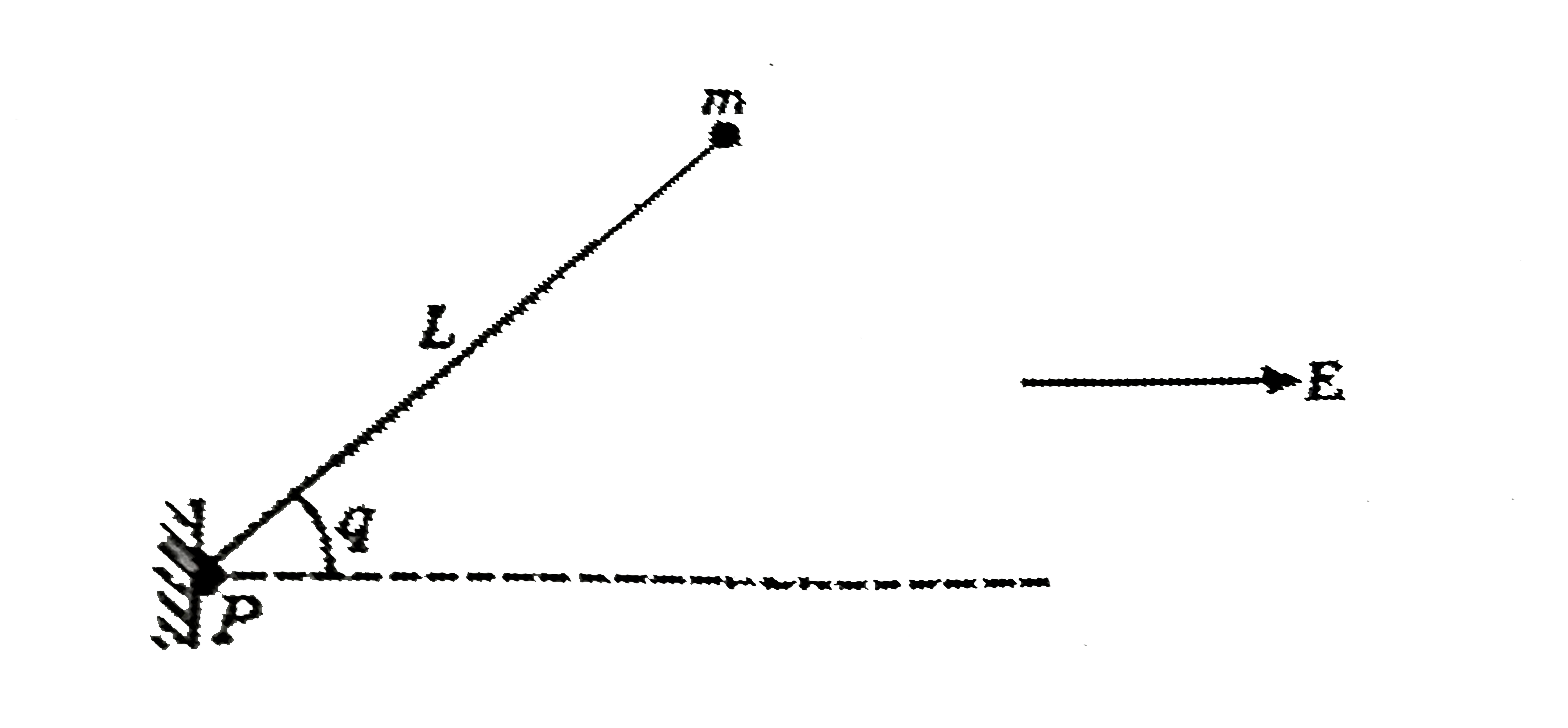 03:55View Solution
03:55View SolutionA positively charged sphere of radius `r_(0)` carries a volume charge density `rho_(E)` (Figure). A spherical cavity of radius `r_(0)//2` is then scooped out and left empty, as shown. What is the direction and magnitude of the electric field at point B?
 04:47View Solution
04:47View SolutionUsing Thomson's model of the atom, consider an atom consisting of two electrons, each of charge `-e`, embedded in a sphere ofcharge + 2e and radius R. In equilibrium each electron is at distanced from the centre of the atom. What is equilibrium separation between electrons ?
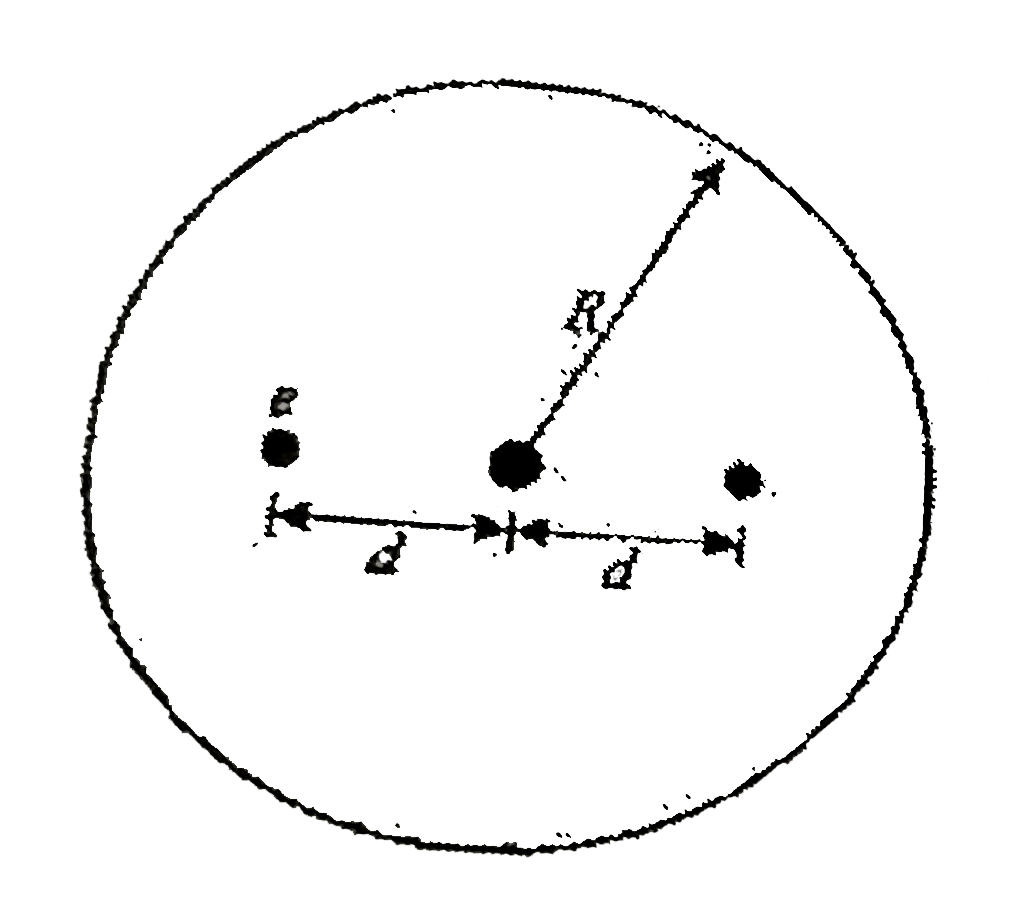 03:21View Solution
03:21View SolutionIf the electric potential of the inner shell is `10 V` and that of the outer shel is `5V`, then the potential at the centre will be
 02:54View Solution
02:54View SolutionA nonconducting sphere with radius a is concentric with and surrounded by a conducting spherical shell with inner radius b and outer radius c. The inner sphere has a negative charge uniformly distributed throughout its volume, while the spherical shell has no net charge. The potential V (r) as a function of distance from the center is given by
 03:50View Solution
03:50View SolutionA charged particle q is shot from a large distance twoards another charged particle Q which is fixed, with speed v. It approaches Q up to as closed distance r and then returns. If q were given a speed 2v, the distasnce of approach would be
 05:04View Solution
05:04View SolutionA sphere carrying a charge of Q having weight w falls under gravity between a pair of vertical plates at a distance of d from each other. When a potential difference V is applied between the plates the acceleration of sphere changes as shown in the figure, to along line BC. The value of Q is
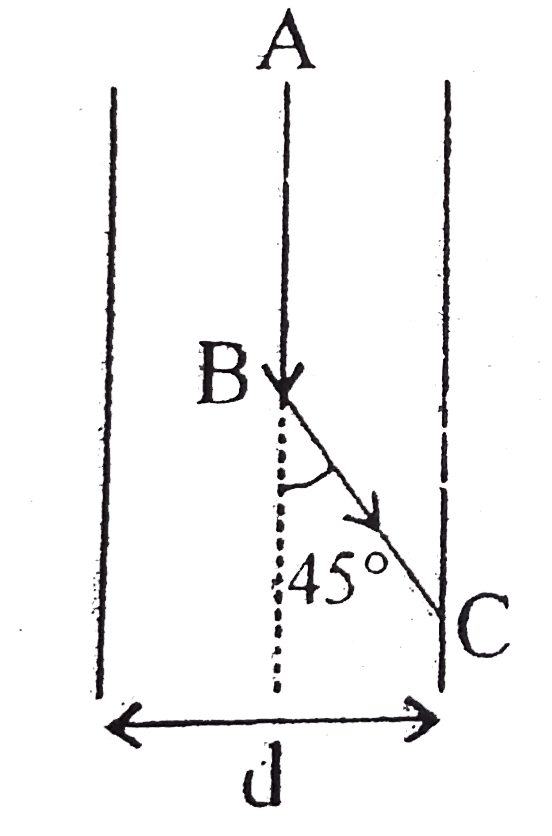 02:48View Solution
02:48View SolutionLet `E_1(r)`, `E_2(r)` and `E_3(r)` be the respectively electric field at a distance r from a point charge `Q`, an infinitely long wire with constant linear charge density `lambda`, and an infinite plane with uniform surface charge density `sigma`. If `E_1(r_0)=E_2(r_0)=E_3(r_0)` at a given distance `r_0`, then
08:18View SolutionConsider a uniform spherical charge distribution of radius `R_(1)` centred at the origin `O`. In this distribution a spherical cavity of radius `R_(2)`, centred at `P` with distance `OP = a = R_(1) - R_(2)` (fig) is made.If the electric field inside the cavity at position `vec(r )`, then the correct statement is
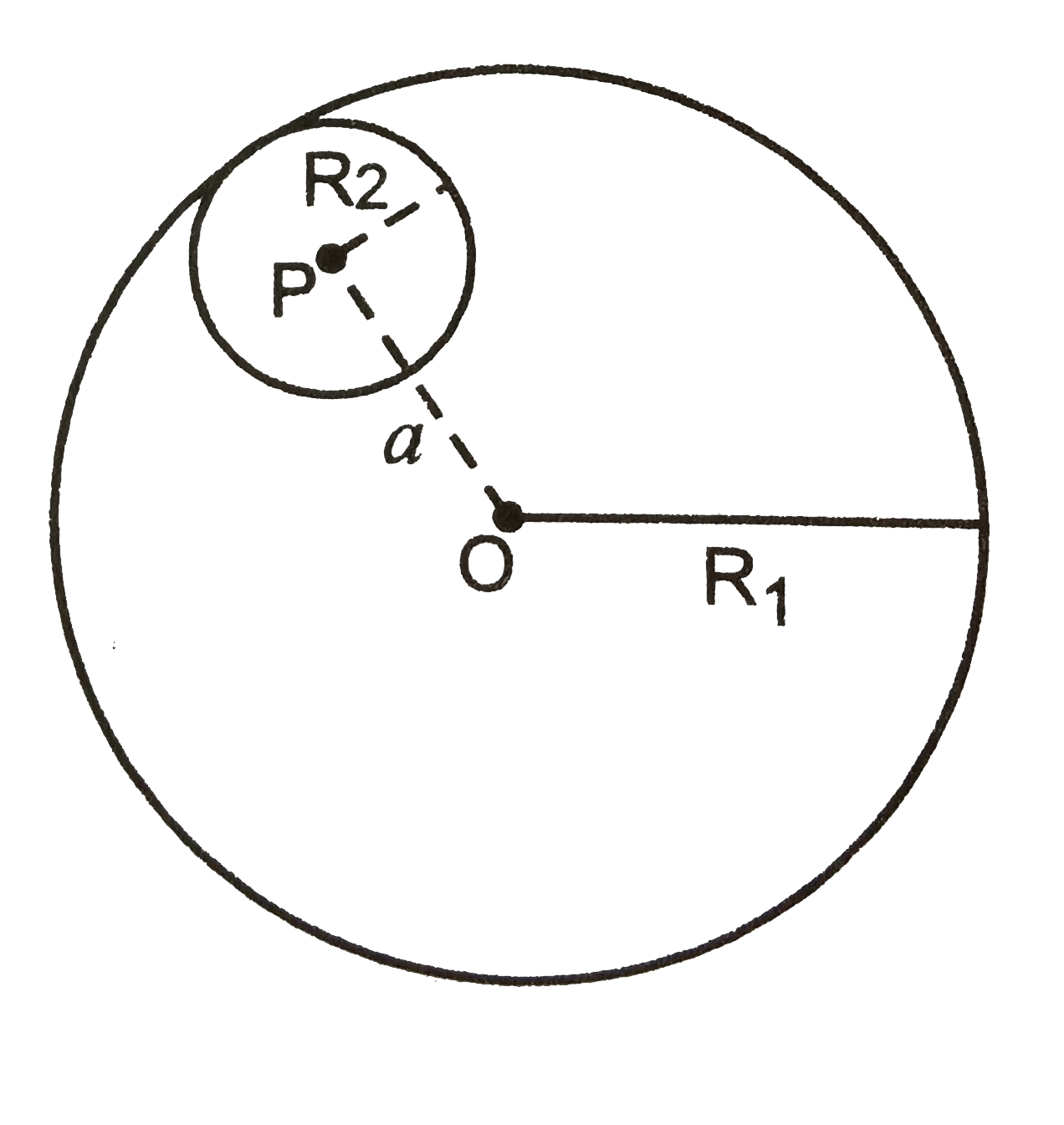 06:03View Solution
06:03View SolutionFigure shown a closed surface which intersects a conducting sphere. If a positive charge is placed at the point P, the flux of the electric field through the closed surface
 01:17View Solution
01:17View SolutionA positive point charge `+Q` is fixed in space .A negative point charge `-q` of mass `m` revolves around a fixed charge in elliptical orbits .The fixed charge `+Q `is at one focus of the ellipse.The only force acting on negative charge is the electrostatic force due to positive charge is the electrostatic force due to positive charge.Then which of the following statement is true
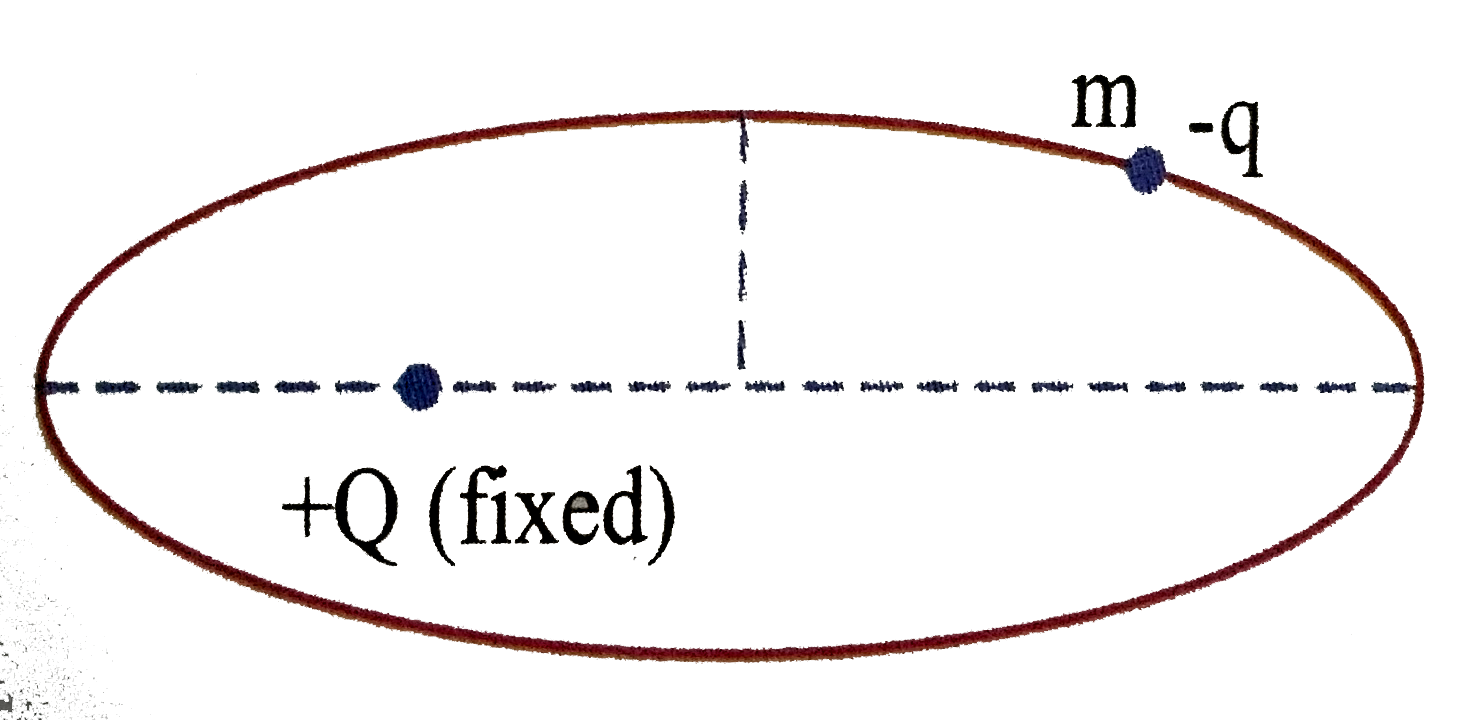 05:21View Solution
05:21View SolutionAn irregular shaped non conductor has some charge distribution. The potential difference between the two points A and B in it is V. If it is now enveloped in an spherical non conducting shell having uniform charge distribution in it, the new potential difference between the points (neglect any induction due to presence of charge)
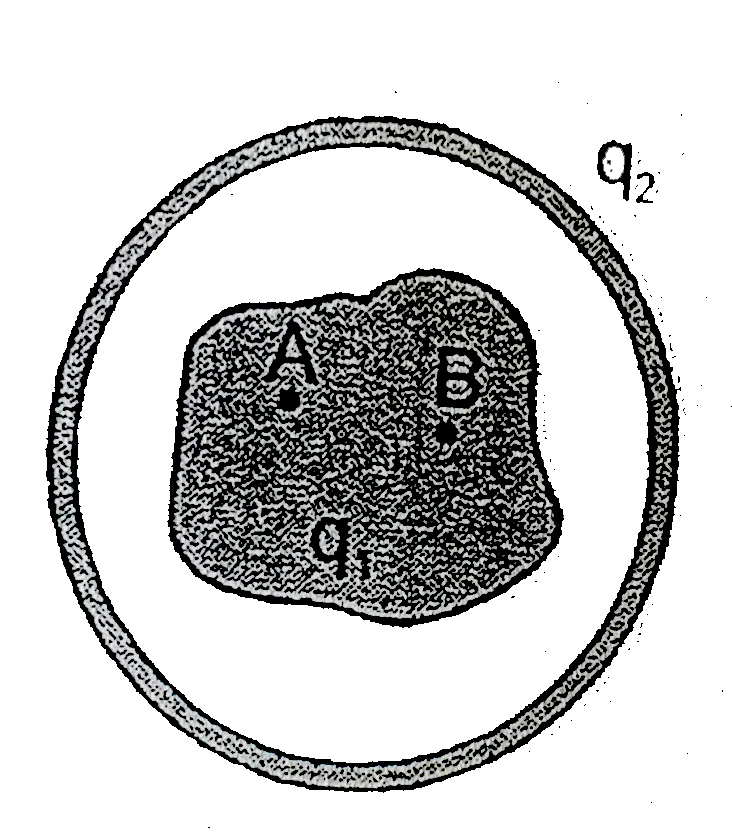 02:02View Solution
02:02View Solution
Conceptual MCQs single option correct questions and complete solutions for chapter ELECTROSTATICS of GK PUBLICATIONS PHYSICS (HINGLISH) of Class 12
All Exercises from PHYSICS GALAXY Class 12 PHYSICS ELECTROSTATICS
- Advance MCQs
- Conceptual MCQs single option correct
- Discussion Question
- Illustrative Example
- Numerical MCQs Single options Correct
- Partice Exercise
- Partice Exercise 1.1
- Partice Exercise 1.10
- Partice Exercise 1.2
- Partice Exercise 1.3
- Partice Exercise 1.4
- Partice Exercise 1.5
- Partice Exercise 1.6
- Partice Exercise 1.7
- Partice Exercise 1.8
- Partice Exercise 1.9
- Unsolved Numberical Problems
